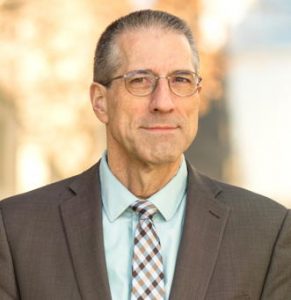IN THE SPOTLIGHT: Young dancers talk about The Nutcracker and their roles in local production
If you want to know what the six youngsters playing the lead parts in the Kansas City Ballet’s The Nutcracker think about what they do, just ask them. Not only can they pirouette, plié and jeté, these boys and girls aged 9 to 14 can also talk about dance with clarity, thoughtfulness and no small amount of humor. We recently sat down with the six youths who play the double-cast parts of the Prince, Clara and Fritz to talk about dance history, Todd Bolender’s Nutcracker choreography, the characters they play, and their hopes and dreams. Each is a veteran not only of Nutcracker performances but of several years’ experience in ballet, having studied at the Kansas City Ballet School or at other schools around the country. All take dance very seriously, and some say they might pursue it as a career. But for now, they’re just having the time of their lives.
“It’s a great way to express yourself, and be your own person,” says Durante Verzola, 14, of Lansing, who is playing the Prince for the second time locally and has performed it with Oregon Ballet Theater. “I dance because it gives me a physical thrill.” For 12-year-old Riley Horton of Blue Springs, the other Prince of the cast, the physical finesse is part of the fun but the sense of achievement is important, too. “When you’re onstage doing lots of pirouettes and big jumps, it just feels great. And after a performance, when you know you’ve done a good job, the feeling is great, too.” For 9-year-old Connor Horton, who plays Fritz, dance was at first something he did because big brother Riley did it. “I thought it looked kind of fun, so I tried it out, and ever since then I’ve been having a lot of fun.” When it comes to motivations and rewards, dance is not that different from sports, saysZachary Boresow, 12, of Overland Park, the other Fritz of the cast. “You want to win, to accomplish something, to do the best you can in everything you do.”
Dance is demanding, says 13-year-old Elena Loyacono-Bustos of Kansas City, Mo., one of this season’s Claras. But it’s also great at building self-esteem. “I feel beautiful when I dance. You’re so nervous, but then you get onstage and you have so much fun.” Brittany Muriel-Marion LaPointe, 13, who alternates as Clara, agrees. “When I dance, I feel like nothing can stop me. I feel beautiful, and I have a lot more self-confidence.” But ballet is not for everyone, Elena says. “You have to really, really be in love with dance, because they critique you so much.” When it comes to training dancers, the directors of the Kansas City Ballet and its School are continually coaxing students, gently but firmly, to achieve their best. “They’re strict because they care,” Elena says, “because they think you have talent, and they want to make you amazing.”
Ask these youngsters about the characters they play and they’ll fill your ear for sure. Clara is “a shy person,” Brittany says, but when she meets the Nutcracker she “comes out of her shell.” To play the Prince, Durante says, he constantly has to be thinking about “being strong, being princely, carrying myself nicely, making all of my movements big so that everybody can notice them.” The Prince is “the hero, the person who is always doing the right thing,” Riley says, “but you have to know how to put your own spin on it.” Is there is chemistry between Clara and the Prince? “They get butterflies when they see each other,” Zachary says. But of course they are too young to be anything but friends, he adds, “because of the cooties.” Fritz, who in a fit of spite stomps on the Nutcracker and breaks it, is “a well-behaved, wealthy child who sort of has some mischievousness inside him,” Connor says. “He knows his manners,” Zachary adds, “but he chooses not to use them a lot of the time, because he likes to add his own sort of fun to things.”
Why is The Nutcracker still around 117 years after its premiere? “There’s something about the story that’s captivating,” Riley says. “It never gets old. And with all these versions around, you can go to different ballets and see something new each time.” One aspect that all six dancers like about the local Nutcracker is its ambiguous ending. Was it all a dream, or did Clara really go off to live in the Kingdom of Sweets? “I like to believe that it was real,” Elena says, “that there’s an actual land of sweets.” Brittany concurs. “Why would I want to dream all that just to come home and wake up in the morning and eat pancakes?” In Bolender’s version, Clara and the Prince fly off on a sleigh at the end. “I think that’s another reason people like it,” Durante says, “because it doesn’t show if she comes back home or not, and they can put their own interpretation on it.”
There’s little doubt that some of these six kids are destined for dance careers; others are keeping things open. “When I get older I definitely want to be a dancer,” Elena says. “It’s still definitely one of my options,” Brittany says, “and if I end up not wanting to be a dancer then I guess I’ll be fine with that. But right now my heart is set on dance.” All six have learned to ignore their peers’ sometimes misguided notions of ballet. “If you really like it, then you shouldn’t listen to what they say,” Zachary says. “You just listen to what your heart says. Because you like to dance.”
The Kansas City Ballet’s The Nutcracker runs December 16-27 at the Music Hall. Call 816-931-2232 or go to kcballet.org. To reach Paul Horsley, send email to phorsley@sbcglobal.net.





